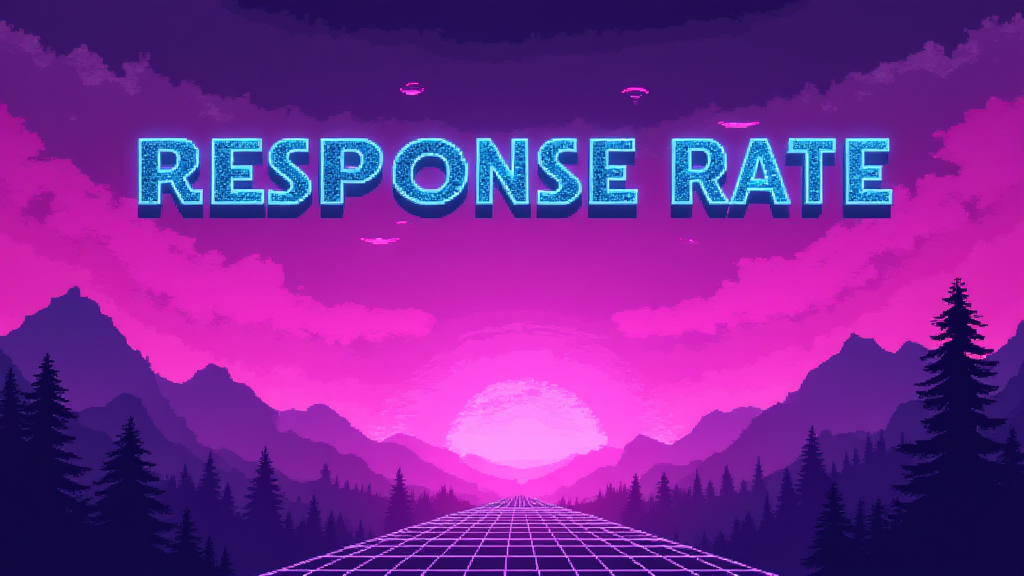Email Response Rate: Key Metric for Marketing

Published on: October 01, 2024
In the world of digital marketing and sales, understanding and optimizing your Email Response Rate is crucial for success. This metric provides valuable insights into the effectiveness of your email campaigns and the engagement level of your audience. Let's dive deep into this essential concept and explore its significance in modern marketing strategies. 📊📈
What is Email Response Rate?
Email Response Rate is the percentage of recipients who reply to an email campaign out of the total number of delivered emails. It's a key performance indicator (KPI) that measures how well your email content resonates with your audience and prompts them to take action.
The formula to calculate Email Response Rate is:
$$\text{Email Response Rate} = \frac{\text{Number of Responses}}{\text{Number of Delivered Emails}} \times 100\%$$
Why is Email Response Rate Important? 🎯
Understanding your Email Response Rate is crucial for several reasons:
- Engagement Measurement: It indicates how well your content resonates with your audience.
- Lead Quality: Higher response rates often correlate with better-quality leads.
- Campaign Effectiveness: It helps evaluate the success of different email strategies.
- ROI Indicator: A high response rate can lead to improved return on investment for your email marketing efforts.
Factors Affecting Email Response Rate
Several factors can influence your Email Response Rate:
- Subject Line: An engaging subject line can significantly increase open rates and, consequently, response rates.
- Email Content: Relevant, personalized, and valuable content is more likely to elicit responses.
- Timing: Sending emails at the right time can improve the chances of getting a response.
- Audience Segmentation: Targeting the right audience with tailored messages can boost response rates.
- Call-to-Action (CTA): Clear and compelling CTAs can encourage recipients to respond.
Average Email Response Rates 📊
Response rates can vary widely depending on the industry, type of email, and target audience. However, here's a general overview:
| Email Type | Average Response Rate |
|---|---|
| Cold Emails | 1% - 5% |
| Marketing Emails | 2% - 10% |
| Transactional Emails | 15% - 25% |
Note: These figures are approximate and can vary based on various factors.
Improving Your Email Response Rate 🚀
To boost your Email Response Rate, consider implementing these strategies:
- Personalize your emails: Use recipient names and tailor content to their interests.
- Craft compelling subject lines: Make them intriguing and relevant to increase open rates.
- Keep it concise: Respect your recipients' time with clear, to-the-point messages.
- Segment your audience: Send targeted emails to specific groups based on their characteristics or behaviors.
- Test and optimize: Continuously A/B test different elements of your emails to improve performance.
- Follow up: Implement a strategic follow-up sequence for non-responders.
Common Misconceptions about Email Response Rate
Let's debunk some myths:
- Higher open rates always lead to higher response rates: While important, open rates don't guarantee responses.
- More emails mean more responses: Quantity doesn't always trump quality. Focus on sending relevant, valuable emails.
- Response rate is the only important metric: While crucial, it should be considered alongside other metrics like conversion rate and ROI.
Email Response Rate vs. Other Email Metrics
While Email Response Rate is important, it's just one of several key email marketing metrics. Here's how it compares to others:
| Metric | What it Measures | Importance |
|---|---|---|
| Email Response Rate | Percentage of recipients who reply | Engagement and content relevance |
| Open Rate | Percentage of recipients who open the email | Subject line effectiveness and sender reputation |
| Click-Through Rate (CTR) | Percentage of recipients who click on a link in the email | Content and CTA effectiveness |
| Conversion Rate | Percentage of recipients who complete a desired action | Overall campaign effectiveness and ROI |
Understanding and optimizing your Email Response Rate is crucial for successful email marketing and sales campaigns. By focusing on this metric, you can improve engagement, generate better leads, and ultimately drive more conversions. Remember, it's not just about getting responses – it's about fostering meaningful interactions that lead to long-term customer relationships. 🤝💼
Implementing Email Response Rate Optimization in Your Strategy
As you look to improve your Email Response Rate, consider asking yourself these questions:
- How does my current Email Response Rate compare to industry benchmarks?
- What segments of my audience have the highest response rates, and why?
- How can I personalize my emails further to increase relevance and engagement?
- What A/B tests can I run to improve my subject lines and email content?
- How can I better align my email content with my audience's needs and pain points?
- What follow-up strategies can I implement to re-engage non-responders?
By continuously asking these questions and refining your approach, you'll be well on your way to mastering the art of email marketing and achieving higher response rates. 📧🎯
















